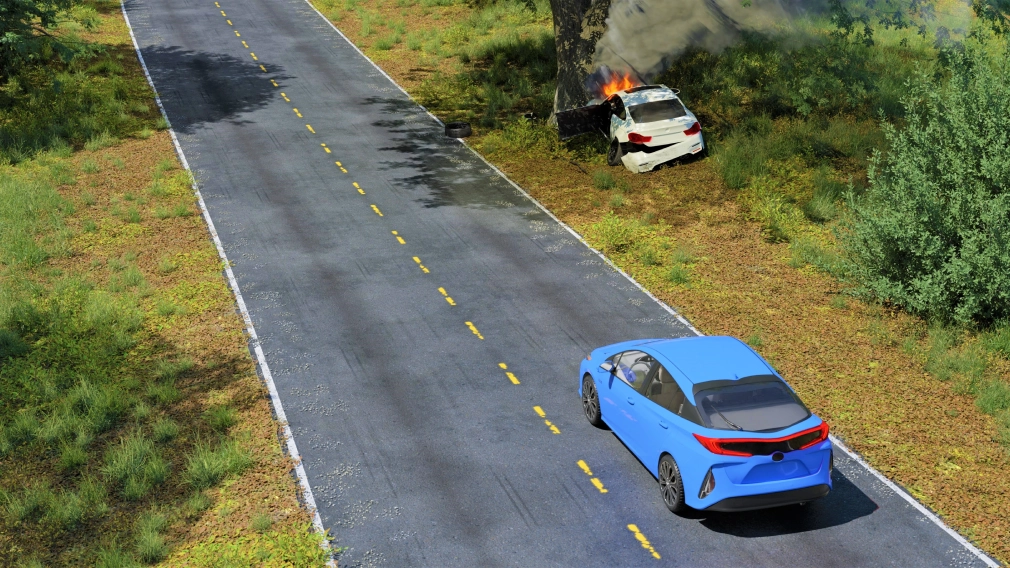What to Do After a Crash

Experiencing a crash is stressful, even for seasoned drivers. Knowing what steps to take after a collision is essential for keeping yourself and other road users safe.
Follow these steps after any collision involving your vehicle:
1. Remain Calm
Feeling nervous or frustrated after a crash is natural, but it’s important to control your emotions to respond logically. Some drivers panic and flee the scene, while others become argumentative and focus on blaming others. Safety should be your top priority after a crash.
2. Assess the Situation
Evaluate the road conditions for any immediate dangers. Do not exit your vehicle if fast-moving traffic, downed power lines, or other hazards are nearby.
If you believe the crash site is unsafe for any reason, call the appropriate emergency services for help.
If you decide it’s safe to leave your vehicle:
- Turn on your hazard lights (emergency flashers)
- Exit through the door farther from traffic
- Continue to check for approaching drivers
3. Check for Injuries
First, check yourself and any passengers in your vehicle for injuries.
If anyone else was involved in the accident (drivers, pedestrians, or cyclists), confirm if they are injured or need assistance.
If anyone is hurt, call 911 or have someone else call if you cannot.
Even minor injuries should be examined by a medical professional.
Do not move an injured person unless necessary to remove them from danger. Movement can worsen injuries and increase blood loss.
4. Move Away From Traffic
Once you’ve confirmed everyone is safe, make sure your hazard lights are on and assess the damage to your vehicle.
- If your vehicle is drivable, move it to the side of the road near the crash scene but away from traffic.
- If your vehicle is unable or unsafe to move, leave it and move away from traffic.
If you have emergency flares or other warning devices, set them up a fair distance behind your vehicle to give approaching traffic time to respond.
Don't ignite flares or other flames if you smell gasoline or suspect fuel leakage. Turn your engine off and refrain from smoking.
5. Call Emergency Services
Specific legal requirements for reporting accidents vary by state, but it’s almost always a good idea to report a crash immediately after it happens.
If there are serious damages or any injuries, call 911 and follow the operator’s instructions.
If there are no injuries and only minor damage, you can call
- 911
- Towing services
- A roadside assistance service
- Your local traffic patrol or law enforcement agency
Tip: If police respond to the crash scene, request a copy of their report and note their name and badge number in case you need to follow up.
6. Exchange Contact and Insurance Information
Next, you need to exchange information with anyone else involved in the crash and any witnesses willing to make a statement.
Collect this information from everyone:
- Names
- Phone numbers
- Addresses
Exchange this information with any other drivers involved:
- Vehicle make, model, and color
- Insurance provider and policy number
- Driver’s license and license plate numbers
Take pictures of all vehicles involved in the crash from multiple angles. Document any damages and the location of the crash.
If you collide with unattended property, try to find the owner or leave your contact information with the damaged item.
7. Notify Your Insurance Provider
It's generally smart to inform your auto insurance provider of crashes immediately. That way, you can make sure you have all the information you need and get your vehicle repaired as soon as possible.
You'll be assigned a representative to help navigate your claim and coordinate services.
Tip: Some states require drivers to report crashes to their state driving authority. Familiarize yourself with local laws to see if you need to file a report.
Crashes are unpleasant, but remaining calm and following these steps will help you resolve the situation quickly and safely.